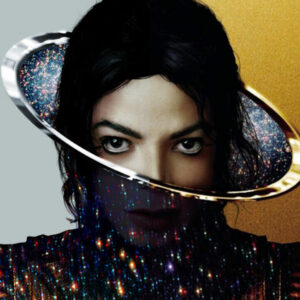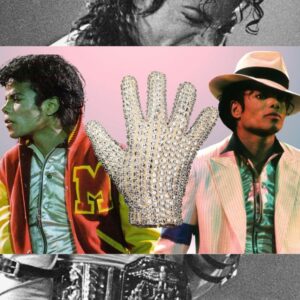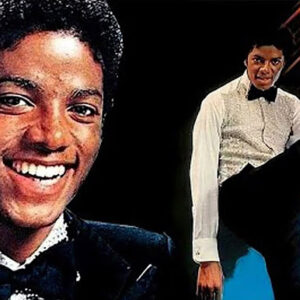Few artists in modern music can lay claim to the kind of cultural, emotional, and artistic influence that Mary J. Blige has wielded in the realm of R&B and hip-hop. Rising from humble beginnings, Blige has navigated a tumultuous industry to become one of the most enduring voices of her generation. Known for her raw emotionality and incomparable stage presence, she has carved out a unique space for herself not just through studio albums, but also through her live performances, which serve as cathartic, immersive experiences for her fans. Mary J. Blige’s live albums, in particular, showcase her ability to convey profound personal narratives and connect on a visceral level with audiences, making her a transformative figure in music.
Unique Vocal Style and Stage Presence
Mary J. Blige’s voice is a force to be reckoned with, capturing a range of emotions that seem to transcend the boundaries of the stage. Her live vocal style is distinct, marked by a blend of soul, grit, and vulnerability that connects directly with her listeners. She doesn’t just sing; she bares her soul with every note. In live performances, her voice isn’t polished to perfection—she’s unafraid of raw edges, of letting her voice crack if it means conveying the intensity of her experience. This vocal approach brings a sense of authenticity that fans find both comforting and exhilarating.
Take her legendary performance at the Apollo Theater, for instance. In a setting that has historically celebrated Black artistry, Blige’s rendition of her hit “No More Drama” became more than just a song; it was a statement of resilience. With each note, she told a story not only of personal survival but also of shared pain and collective healing. Blige’s ability to wear her heart on her sleeve has set her apart from many of her peers, allowing her to forge a deep bond with her audience. The physicality of her performances—her body language, her facial expressions—are all part of what makes her a powerful live performer. For Blige, the stage isn’t just a place to perform; it’s a place to confront her own history and, in doing so, invite fans to confront theirs.
Live Albums as Authentic Storytelling
For Mary J. Blige, live albums have always been more than just recordings of concerts; they are carefully curated stories, chapters in her personal journey, and gifts to her fans. With each live album, Blige doesn’t merely present a setlist of hits; she crafts a narrative that takes fans into the depths of her experiences. Her albums like The Tour and Live from Los Angeles are beloved not only because they showcase her musical prowess but because they present an artist unfiltered and unapologetic.
In live album recordings, Blige conveys a rawness that isn’t as easily captured in studio albums. She interacts with her audience, speaks directly to them, and lets moments breathe in a way that resonates deeply. Each spoken word, every improvised riff, and the audience’s responses contribute to a narrative that feels deeply personal. In an industry where digital production often smooths every rough edge, Blige’s live albums stand as a testament to the beauty of imperfection. They allow her to show that real artistry is as much about emotional resonance as it is about technical skill. Fans don’t just listen to a Mary J. Blige live album; they feel like they’re a part of it, experiencing every high and low along with her.
Impact on Live Album Popularity in R&B and Hip-Hop
Historically, live albums have been more prevalent in rock and jazz genres than in R&B or hip-hop, which are often more closely associated with studio production. However, Mary J. Blige has played a pivotal role in challenging that norm. Her success with live recordings has not only showcased her own artistry but also spurred a renewed interest in live albums within R&B and hip-hop. With each live release, Blige redefined what it meant to perform “live” within these genres, blending musicality with narrative in a way that feels refreshing and compelling.
Blige’s influence has extended beyond her own career, inspiring other artists in R&B and hip-hop to explore live albums as a medium. Artists such as Erykah Badu and Lauryn Hill have also delved into live recordings, bringing their own unique approaches to the format. By taking risks with live albums, Blige has opened doors for future artists to showcase their authentic voices and convey their messages directly to fans without the confines of studio perfection. Her approach has allowed R&B and hip-hop artists to see live recordings not as an afterthought but as an opportunity to deepen their connection with fans and offer a fuller, more complex portrayal of their artistry.
Connection with Fans
One of the most powerful aspects of Mary J. Blige’s career is her enduring connection with her fans. Her live albums foster a bond that feels almost familial; she has a way of making every fan feel seen and heard. Through her live performances, she transcends the traditional artist-fan dynamic, creating a space where the audience feels part of her journey. Her fans relate to her struggles and triumphs, and her live albums reinforce that connection by offering fans a glimpse into her heart and soul.
This connection has had a tangible impact on her fan base. Mary J. Blige isn’t just a musician; she’s a confidante, a healer, and a source of strength for countless fans. Her live albums have fostered a sense of community, making fans feel like they’re part of something larger than themselves. This sense of unity is evident in her concert attendance and the loyalty her fans display. Blige’s live recordings make fans feel like they’re not just listening to music but participating in a shared experience. It’s a bond that has kept fans coming back for more, supporting her through every phase of her career.
Blige’s Influence on Emerging Artists
Mary J. Blige’s career has not only impacted her fans but has also left an indelible mark on the next generation of artists. For many up-and-coming musicians, Blige represents a role model in authenticity and emotional honesty. She has shown that vulnerability is not a weakness but a source of strength, inspiring emerging artists to explore live albums as a way to showcase their raw, unfiltered selves. Her influence on young artists goes beyond musical technique; she has imparted a philosophy of openness and resilience that has shaped a new wave of performers.
By prioritizing emotional connection in her performances, Blige has encouraged younger artists to see live albums as an avenue to reach fans in a more meaningful way. Artists like SZA and H.E.R. have adopted similar approaches, using live recordings to break down the barriers between artist and audience. Blige has created a blueprint for live performance in R&B and hip-hop that balances vulnerability with strength, showing aspiring artists that it’s possible to share personal stories while maintaining artistic integrity. Her influence has created a ripple effect, shaping a generation of musicians who understand that authenticity is at the heart of lasting impact.
Conclusion
Mary J. Blige’s legacy in the music industry goes beyond hit singles and chart-topping albums. Her commitment to live performance and authentic storytelling has redefined what it means to be an artist in R&B and hip-hop. Blige’s live albums are more than just recordings; they are snapshots of her evolution, powerful documents of a woman who has faced adversity and emerged stronger. Her willingness to lay bare her soul in front of her fans has inspired a new appreciation for live albums and has paved the way for other artists to explore this powerful medium.
Blige’s influence extends beyond music, touching lives, inspiring resilience, and reminding fans that they are not alone in their struggles. She has built a legacy as a trailblazer, a woman who reshaped the perception of live music in R&B and hip-hop. For fans and artists alike, Mary J. Blige remains a powerful example of the impact live music can have—a testament to the enduring power of authenticity, vulnerability, and soul.





